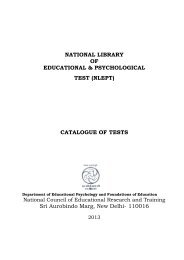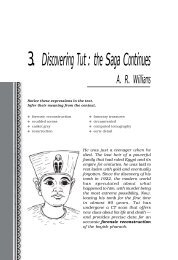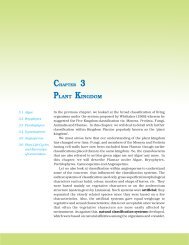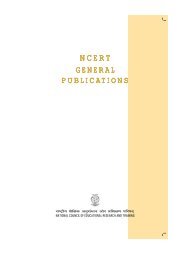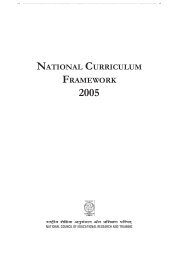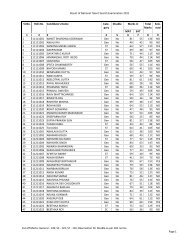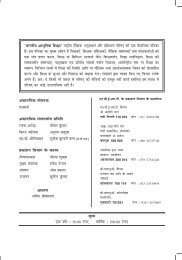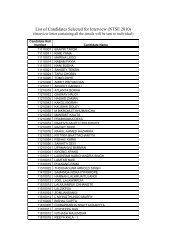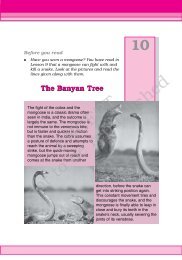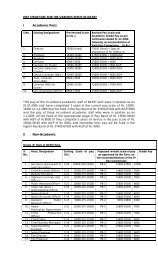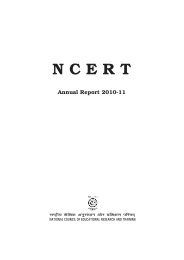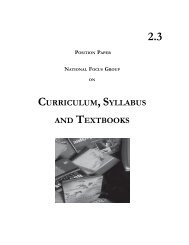indian education - National Council Of Educational Research And ...
indian education - National Council Of Educational Research And ...
indian education - National Council Of Educational Research And ...
You also want an ePaper? Increase the reach of your titles
YUMPU automatically turns print PDFs into web optimized ePapers that Google loves.
A Study of Relationship between Environmental Awarencess... 63<br />
Hypothesis of the Study<br />
The following were the research<br />
hypotheses of the study:<br />
H : Demographic variables like age,<br />
R1<br />
religion, sex, place of residence, family<br />
status, parent’s occupation and parent’s<br />
income affect the environmental<br />
awareness of higher secondary students.<br />
H : The <strong>education</strong>al variables like<br />
R2<br />
course of study, grade, parent’s level of<br />
<strong>education</strong> affect the environmental<br />
awareness of higher secondary students.<br />
H : Environmental awareness has<br />
R3<br />
relationship with scientific attitudes<br />
among higher secondary students.<br />
Measurement of the Variables of the<br />
Study<br />
The independent variable of this study<br />
is scientific attitudes of higher secondary<br />
students while dependent variable is<br />
environmental awareness.<br />
From review of related literature it<br />
was evident that although a lot of work<br />
has been done on environmental<br />
awareness and scientific attitude<br />
separately, but the researcher could not<br />
find any study which dealt with these two<br />
variables together. This study is an<br />
attempt to highlight the relationship<br />
between environmental awareness and<br />
scientific attitudes.<br />
(i) Environmental Awareness<br />
In this study the environmental<br />
awareness is measured with the help of<br />
‘Environmental Awareness Test’,<br />
designed and administered by the<br />
researcher. Scores obtained on this test<br />
were taken as measure of awareness of<br />
the higher secondary students towards<br />
environment.<br />
(ii) Scientific Attitude<br />
In this study the scientific attitude is<br />
measured with the help of Kriya<br />
Bhavichar Shailly Prashnawali –<br />
designed by Singh, P. N. (1988).<br />
Relationship among Variables<br />
At the initial level, the study was<br />
concerned with the measurement of<br />
variables, selection of sample and the<br />
description of the sample. At the later<br />
stage, the study was concentrated on<br />
relationship between the independent<br />
and dependent variables, i.e. scientific<br />
attitudes and environmental awareness<br />
respectively.<br />
Population<br />
Population for this study consisted of<br />
science and arts students of higher<br />
secondary schools of Varanasi City<br />
affiliated to U.P. Board.<br />
Sample<br />
In many research situations it is not<br />
feasible to involve or measure all<br />
members of the population under study.<br />
A sample is, therefore, selected and<br />
research is conducted only on those<br />
members selected in the sample. A<br />
sample is defined as a representative<br />
part (or subset) of the population selected<br />
for the observation and analysis. On the<br />
basis of characteristics of the sample,<br />
inferences can be made about the<br />
characteristics of population in<br />
general.<br />
The researcher selected a simple<br />
random sample from the population. This<br />
type of sample is the best representative<br />
of the population whose characteristics<br />
are unknown.



